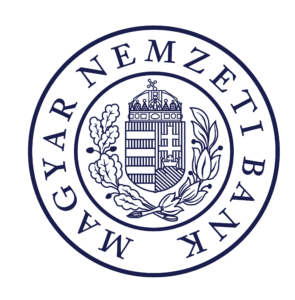
Ádám BORUZS
Ádám Boruzs graduated from the Hungarian University of Fine Arts in Painting and Art Teaching. In his
conceptual art, he applies painting and video as equals to create installations. From the beginning of
his career, he has been interested in the laws of perception, the production of and response to stimuli in
scientific, artistic and everyday experience. His projects develop from each other, somewhat like distinct
stages of a scientific experiment. The temporal aspect of artistic creativity and response is also often
addressed in his works, rendering his art a philosophical character. His installations invite viewers to
experience and meditate on commonplace phenomena from new perspectives.
He is the winner of the Junior Master of Light, Ari Kusps, Unilever, and DECODE Promising Project prizes.

CHAOTIC SENSES
Interactive multimedia installation
During his residency, Ádám developed an installation that connected two research topics: Applied Color Science and Beauty of Flows. In physics and mathematics, chaotic motion is most commonly illustrated by different types of pendulums. Chaotic Senses is a dynamic system corresponding to human proportions. This way it is accessible, manageable and relatable for non-scientists – ordinary viewers – as well. After being pushed, the pendulum oscillates between the two sides of the gate-shaped construction until it comes to rest again. The “chaos pendulum” is equipped with velocity sensors and a webcam. The sensors are located in the lower part of the pendulum, where chaotic motion occurs. A computer software program converts information from the sensors to RGB color codes producing a digital picture that continuously changes with the motion. The camera placed in the tube transmits a live image from the pendulum’s endpoint. When the pendulum is still this is the image of the parabolic mirror underneath the pendulum, which reflects the artwork’s surroundings. The sensor and camera images are displayed by monitors and a projector.
The construction uses the engineering method of signal processing, and, at the same time, it reflects
on the everyday experience of stimulus perception. It performs chaotic signal processing while also
expressing chaotic perception in symbolic terms: the webcam inside the tube embodies our experience
of being constantly exposed to a multitude of real and virtual impulses.
Interactivity is an essential part of the work. In fact, the viewer swinging the pendulum and the installation
perceive each other in real time. The viewer does not only perceive the work but also influences
it by putting the pendulum into motion. This way the viewer determines chaos and becomes the creator
of the resulting digital images.
Olga KOCSI
Olga Kocsi studied Media Design and Art & Design Teaching at Moholy-Nagy University of Art and
Design Budapest (MOME) where she is currently conducting her doctoral research. She has presented
her work at various individual and group exhibitions and won several scholarships and residencies including the Artist Exchange Program of the Budapest Gallery which took her to Regensburg, residency
at ICI–CCN, Montpellier, and the Derkovits Scholarship for young Hungarian artists. She was shortlisted
for the Leopold Bloom Prize in 2021.
Her photo and video installations offer a multisensory experience for the audience, whose involvement is encouraged by creating unusual situations in the exhibition space. Always suffused with irony, her work often uses and comments on cutting-edge science and technology. From her first exhibitions to the present, she has been investigating the relationship between private and public, mental and exterior, as well as virtual and real spaces. In her projects, she often applies a participatory approach.

INVISIBLE WORK
Multimedia installation
The Movement and Art research topic offered artists an insight into the work at a motion laboratory. During her residency, Olga Kocsi invited her friends to the laboratory to examine their everyday routine
activities. The 2 to 10 minute movement sequences of her subjects were transformed into data
by the motion capture technology used in the laboratory, and they were also recorded on video,
photos and by a Kinect camera equipped with her own software. In the exhibition, Olga Kocsi represents
the digital visual data in different forms: on displays, by prints on steel, as glass objects
and 3D statues.
Different types of data and visualisation allow different degrees of abstraction: some completely
detach movement from the individuality and biography of the moving persons, others let us see
the individual performing the movements. This creates tension between scientific cognition and
everyday knowledge: What does it mean to know and to recognize someone by their movements?
The artworks in the installation play with two basic features of movement: spatiality and temporality.
On the metal sheets, the spatial and temporal momentums of the movement captured by the
Kinect form a single image; the series of glass plates line up consecutive moments; and the amorphous
3D statues embody the entir e period of the movement as if transfiguring time into space.
Though all movements performed are part of the subjects’ daily routines, some things they do are
characteristic of their professional activities – such as sitting in front of a computer or playing
music –, and others are unrelated to their role in the public space – such as the researcher cooking
for her family or the dancer moonlight cleaning an Airbnb flat. Inspiring a multitude of associations
and interpretations in the viewer, Invisible Work draws our attention to the many activities
that we do not think of as movement, especially not as movement deserving scientific study. On
the other hand, it also underlines how our social roles profoundly determine the visibility of our
various activities.


